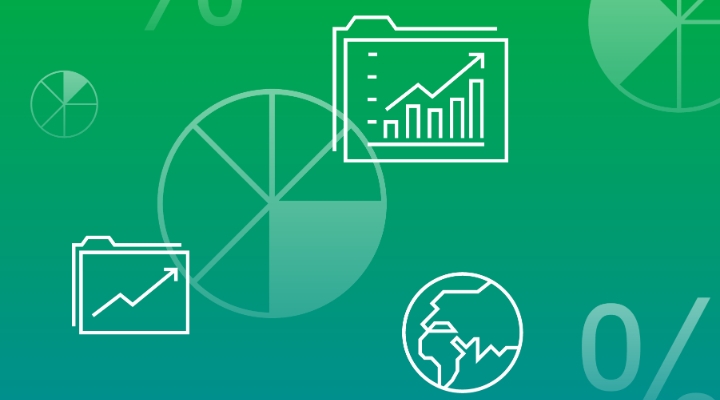
As the third quarter draws to a close, markets continue to struggle. Equities are in bear market territory. The Morningstar US Market Index is down 23.8% for the year to date (all performance data is through Sept. 27). The Morningstar Global Markets Index is down 24.8%. In addition, bond prices have fallen in the rising interest-rate environment: The Morningstar US Core Bond Index is down 15% for the year to date.
Against that backdrop, many (not all!) sustainable funds have struggled to keep pace with their category peers. The returns of sustainable equity funds (as of Sept. 27) rank 59th in their Morningstar Categories, on average. With an average category rank of 53, sustainable bond funds have done better relative to their categories.
Energy Underweightings Haven’t Helped Sustainable Fund Performance
Why have so many sustainable equity funds struggled this year? The most common theory is that sustainable equity funds have underperformed because they avoid fossil fuels. The energy sector posted outsize gains earlier in the year, as demand rose when the pandemic restrictions eased and supply tightened after sanctions were imposed on Russia for its invasion of Ukraine. Although energy stocks were down in the third quarter, Energy Select Sector SPDR (XLE) still has a 29.2% year-to-date return.
Keep in mind, however, two things about this theory: First, not all sustainable funds avoid fossil fuels. Morningstar data, based on a reading of fund prospectuses, indicate that only about 35% of sustainable equity funds in the United States, foreign, and global Morningstar Style Box and diversified emerging-markets categories exclude fossil fuels.
Second, the energy sector has a relatively small weight in diversified equity indexes. Energy has a 4.8% weight in the Morningstar US Market Index and a 5.2% weight in the Morningstar Global Markets Index—higher than at the start of 2022 because of the sector’s outsize performance earlier this year. The almost two thirds of sustainable equity funds that do not exclude fossil fuels have an average energy-sector weight of 4%, based on their most-recently available portfolio holdings. That’s an underweighting, to be sure, but a relatively small one.
Lower energy exposure appears to have had some impact on sustainable fund performance, but not as much as I expected. Sustainable equity funds with no exposure to the traditional energy sector have an average category rank of 64 for the year to date. Among funds that have some energy exposure but that are underweight, the average category rank is 63. No real difference. Sustainable equity funds that are overweight in energy have done a little better—an average category rank of 56—but not markedly so.
Growth Tilts Have Hurt Sustainable Investors the Most
The bigger story of this year’s performance has to do with the growth tilt of so many sustainable equity funds. Quality growth stocks entered the year with high valuations partly earned because they were seen as safer havens during the pandemic. These stocks had also fared well in the prolonged period of low interest rates because the market highly valued their future earnings. But with interest rates rising this year to cool inflation, those future earnings are no longer valued as highly, especially amid concerns over a slowing economy. Many of these growth companies—internet, technology, consumer cyclicals—do relatively well on how they handle material environmental, social, and governance issues, so they tend to be overweight in many sustainable equity fund portfolios.
Looking at the U.S. large-cap blend category, for example, 68% of sustainable funds have growth tilts. These are funds that have style scores of less than 50 in Morningstar’s risk model. Only 32% of large-blend sustainable funds have value tilts (style scores above 50). By comparison, in the overall large-blend category, 55% of funds have growth tilts and 45% have value tilts.
Sustainable funds with growth tilts have fared worse than those with value tilts this year, and by quite a bit. I used the fund style scores in Morningstar’s risk model and then looked at how well the growth-leaning funds fared relative to their categories. (I included all style-box value and blend categories, U.S., foreign stock, global stock, and diversified emerging markets.) Indeed, among funds with style factor scores below 50 (indicating a growth tilt), the average category rank for the year to date is 71. Among those with style factor scores above 50 (indicating a value tilt), the average category rank for the year to date is a much better 54.
As for sustainable funds in Morningstar’s growth categories, the growth bias hasn’t hurt past performance. That much may seem obvious, but, in fact, sustainable funds in growth categories have outperformed their conventional growth fund peers this year. The average category ranking of sustainable funds in growth categories is 44, which means these funds have performed quite a bit better than average this year relative to peers.
What This Means for Sustainable Investing
First, simply understand that among sustainable equity funds that reside in a Morningstar blend (or value) category, many tilt toward growth relative to their category peers. That style tilt is often a big factor in understanding sustainable fund performance relative to peers.
A growth tilt had been helpful for quite a while leading up to this year. In fact, even figuring in this year’s returns, sustainable equity funds’ average category ranking for the trailing three years is 44, and for the trailing five years is 41. That’s pretty good. Once growth returns to favor, growth-leaning sustainable funds will benefit, so this is not a bad place to be over the long run.




















